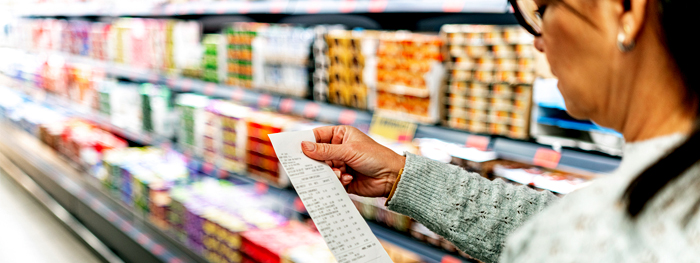Grocery Games: Strategies to Help Stretch Your Food Budget
After several years of unusual price hikes, many shoppers still feel stung when they check out at the grocery store. Measured by the consumer price index, grocery prices rose just 2.2% over the 12 months through July 2025. Even so, prices had risen more than 22% since the beginning of 2020.1

Food prices are prone to volatility, in part because the crops grown to feed people and livestock are vulnerable to pests, extreme weather, and disease. For example, the price of eggs spiked 37% in 2024, as the spread of bird flu diminished supplies nationwide.2
Setting a budget for groceries can help control your spending, but it may require significant effort not to exceed it. Here are a few shopping strategies that could help save you money.
Sign up for loyalty programs, then make stores compete for your business. Many of the specials found in weekly ads require membership in the store’s club program. So even if it feels like overkill, it may be worthwhile to download membership apps, check for the most valuable promotions, and access digital coupons or “personalized” deals before you make a shopping list and decide where to shop.
If you’re concerned about your data being tracked and/or sold, you may be able to turn off tracking by store apps by adjusting the privacy and security settings in your smartphone.
Stock up when the price is right. Grocery stores often rotate advertised specials for beef, chicken, and pork, so you may want to plan meals around sale-priced cuts and buy extra to freeze for later. In fact, freezing can be used to extend the shelf life of many other foods (such as bread or fruit) that might otherwise go bad before they can be eaten.
Buy extra nonperishable food such as rice, pasta, dried beans, canned goods, and frozen fruits and vegetables when they are on sale. It might also save you money to buy essentials in bulk at a membership store that requires an annual fee, but only if you can resist the temptation to overspend on unnecessary items and excess food that ends up going to waste.
Picking Private Labels

Source: Ipsos, 2024
Choose more affordable private-label products. Without the high costs of research and development, marketing, and advertising associated with name brands, store brands can offer savings for consumers and higher profit margins for retailers. For this reason, most large grocery chains sell at least two levels of store brands — a basic-value brand and a premium line — and some also have distinctive “organic” or “natural” product lines. A few grocery retailers stock their shelves almost entirely with their own private labels.
One study found that consumers can save 25% to 30% on their grocery bills by purchasing private-label products instead of name brands.3 Another bonus for shoppers: more competition from private labels puts pressure on national brands to keep their regular prices low and/or to run sales promotions.
In the first half of 2025, private-label products accounted for 23.2% of all grocery units sold — an all-time high.4 Most consumers are willing to make some sacrifices to save money, but now there seems to be a more positive perception of the value and quality offered by private labels. In one 2024 survey, four out of five American consumers said the quality is generally as good as or better than the national-brand versions.5
